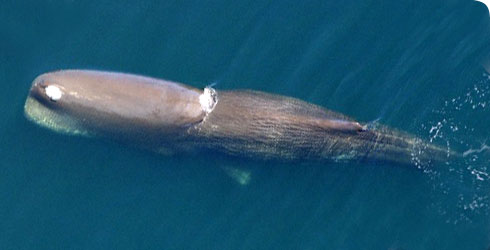Taxonomy
Phylogeny
Currently a single species is recognised worldwide.
Morphology
Body
- somewhat laterally compressed
- sides of the body have a wrinkled appearance
- a thick, rounded, low dorsal hump
- followed by a series of crenulations which run the length of the tail stock
- pectoral flippers are wide and spatulate in shape
- tail flukes are
- broad
- triangular
- with a comparatively straight trailing edge
- caudal peduncle is deep
- often a post-anal keel (Jefferson et al, 2008)
- colour ranges from black to dark blue-grey to pale grey.
- most animals have white colouration around the
- mouth
- belly
- ano-genital region (Jefferson et al, 2008)
- Males may become much paler with age
- most animals have white colouration around the
Head
- one-quarter to one-third the total body length (Jefferson et al, 2008)
- squarish in side profile
- generally smooth
- single S-shaped blowhole located on the left at the front of the head
- shape of the head is determined by the presence of the spermaceti organ
Spermaceti organ
- which may contain up to 1900 litres of waxy oil
- exact function not fully understood it may
- assist in evacuating the lungs and absorbing nitrogen at extreme pressures
- regulate buoyancy during deep diving
- reverberate and focus sounds (Nowak, 2003)
Mouth
- lower jaw is exceptionally narrow
- shorter than the upper jaw
- contains 18 to 26 pairs of conical, functional teeth
- teeth of the lower jaw insert into sockets in the soft tissue of the upper jaw
- upper jaw may possess small, vestigial teeth, but these remain buried in the soft tissue
Nomenclature
Debate continues regarding the correct nomenclature for the sperm whale. Opinion is divided between Physeter catodon and Physeter macrocephalus, both names used by Carl Linneaus in 1758. The Natural History Museum, London uses Mammal Species of the World – a Taxonomic and Geographic Reference (Wilson and Reeder, eds. 2005) to organise its Cetacea collection. Currently, Physeter catodon is considered to be the correct scientific name, though further debate may result in changes at a later stage.
